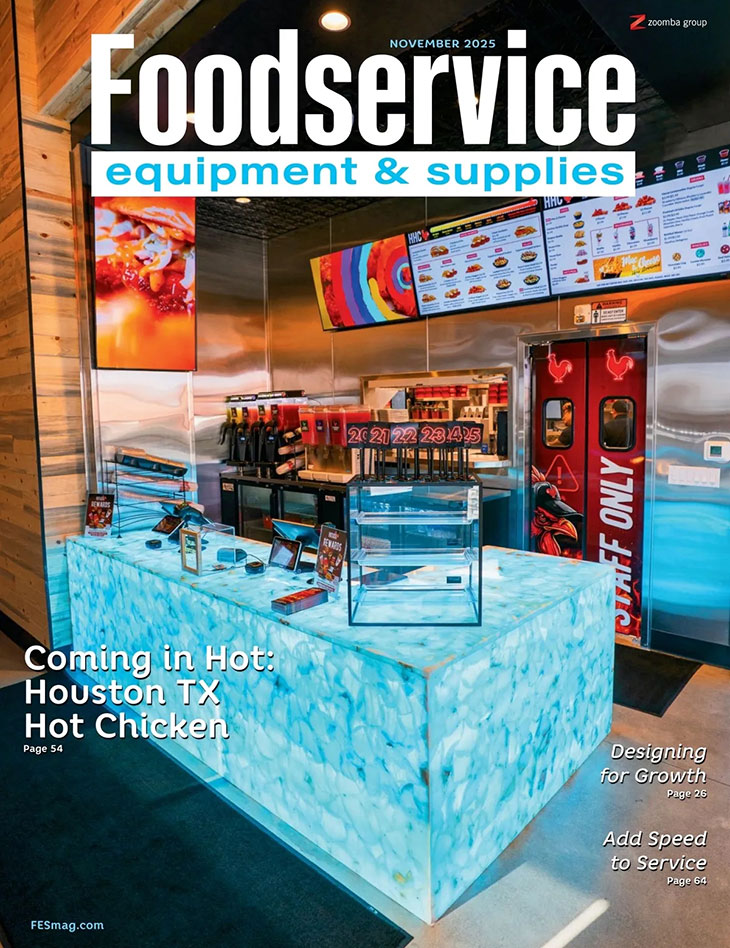Is flat the new up for restaurant chains? How did consumer visits to QSRs fare in the first quarter? What’s a “bellrista?” Will there be a recession in 2025? Answers to these questions and more This Week in Foodservice.
Can a foodservice operation fry without a fryer? Smoke without a smoker? What happens if the foodservice operation has no refrigerator?
Operators do what they do best: tap into their own creativity to achieve their culinary vision and keep serving customers, as this New York Times story points out.
The Times takes a close look at restaurants from California, Colorado, South Carolina, Chicago, and New York City that are doing “the most with the least” and provides both a thought-provoking and inspirational read.
Foodservice News
- Is flat the new up? For large chain restaurants, that might be the case. For the four-week period ending April 6, 2025, large chain restaurant transactions were flat on a year-over-year basis, which in this case represents a notable improvement over February’s 0.4% decline, per data from Circana. Among dayparts, breakfast fared the best seeing a 0.3% increase for the month after declining 6% in February.
- While some chains struggled to generate customer traffic during the first quarter, others fared a little better. Overall, traffic to quick-service restaurants declined 1.6% year-over-year during the first quarter of 2025, per data from Placer.ai. For example, in the coffee segment, Scooter’s Coffee and Dutch Brothers saw visits increase 15.3% and 13.4%, while larger players like Starbucks and Dunkin saw slight declines. And Taco Bell rode some promotional efforts and updated menu items to a 3.7% quarterly traffic increase.
- Are Chipotle’s struggles a harbinger of what’s to come for restaurants? Citing a reduction in consumer spending, the fast-growing, fast-casual chain missed its quarterly earnings projection for the first time since 2020, CNBC reports. Same-store sales declined 0.4% for the quarter, which is in sharp contrast to the 1.7% growth analysts had projected. Restaurant transactions declined 2.3% but were partially offset by a 1.9% average check increase. And Chipotle’s CFO outlined how certain macroeconomic trends could impact the chain. For example, the chain expects tariffs could add 0.2% to its cost of sales for the second quarter and 0.5% to its cost of sales on an ongoing basis. Rising costs due to tariffs and lower consumer spending are not unique to Chipotle and one can only wonder when other operators will start realizing such challenges.
- Let’s get Jack back on track. That’s the goal of a multifaceted plan unveiled by Jack in the Box. Known as JACK on Track, the plan calls for the multiconcept operator to close 150 to 200 what it describes as “underperforming restaurants” and explore selling its Del Taco chain, per a company release. The plan also calls for the company to sell some of its real estate holdings and reduce its spending on corporate locations until 2026. In the meantime, Jack in the Box will continue to invest in its “evolving technologies and digital capabilities,” with the goal of driving sales growth through its digital channels.
- Bertucci’s has filed for bankruptcy. It’s the third time since 2018 that Bertucci’s has filed for bankruptcy. The chain closed seven of its 22 stores before filing, per a Restaurant Dive story, which added that Bertucci’s cited an unanticipated deterioration in the economy and decreased consumer spending at legacy casual dining chains as the causes of its financial struggles.
- Ever hear of a “bellrista”? It’s a Taco Bell crew member tasked with making specialty beverages that can provide “unexpected moments of interaction,” per a Franchise Times story. It’s the latest example of how various restaurant operators continue to look for ways to harness the energy surrounding the industry’s current beverage boom. Franchisee Diversified Restaurant Group is taking an active role in working with Taco Bell to develop new drinks and more to continue to engage consumers around the clock.
Economic News
- Consumer confidence took another big hit in April, per data from The Conference Board. Its Consumer Confidence Index declined 7.9 points for the month leading to reading of 86.0. This represents the lowest reading for this index since May of 2020, per the Associated Press. The Expectations Index declined 12.5 points for a reading of 54.4, its lowest level since October 2011 and less than the threshold of 80 that usually signals a recession. “Expectations about future income prospects turned clearly negative for the first time in five years, suggesting concerns about the economy have now spread to consumers worrying about their own personal situations,” said a Conference Board spokesperson.
- Will there be a recession in 2025? ITR Economics says no. While acknowledging that tariffs can lead to lower economic growth, ITR says they create pain for some and opportunities for others. This could create a balance that helps the overall macroeconomy avoid an outright recession. An economic recession is defined by at least two consecutive quarters of GDP decline. The potential of single-quarter GDP decline is more likely due to factors such as government spending trends and the way imports are calculated against GDP than tariffs themselves, ITR notes. Even if GDP does decline for one quarter, it would not necessarily feel like a recession for most businesses, ITR adds.
- The number of job openings totaled 7.2 million in March, the U.S. Bureau of Labor Statistics noted in its monthly JOLTS report. This was down slightly from 7.48 million job openings reported in February. And it was less than the 7.5 million that many analysts had expected. Hires held at 5.4 million, and total separations changed little at 5.1 million. Within separations, quits (3.3 million) were unchanged and layoffs and discharges (1.6 million) edged down.
- Sales of new single-family houses in March 2025 increased to 724,000 units, which is 7.4% more than the previous month, per data from the U.S. Census Bureau and the Department of Housing and Urban Development. Economists polled by Reuters had projected sales to come in at 680,000 units, per a Yahoo! Business report. Sales were particularly strong in the Southern part of the U.S. March’s sales were also 6.0% greater than the same period in 2024.



